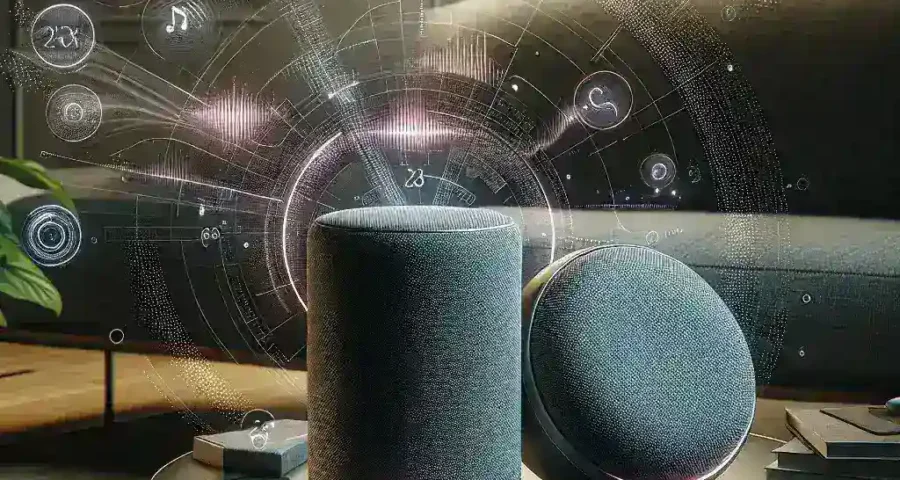Introduction
The technological landscape is ever-evolving, and Google has consistently been at the forefront of innovation, particularly in the field of smart home devices. Recently, hints from the Google app have suggested that a new version of the Nest Audio, termed the Nest Audio 2, may be on the horizon, complete with enhanced features like stereo pairing support. This article delves into what these hints mean for consumers and how they could redefine the audio experience in smart homes.
Historical Context
The original Nest Audio, launched in 2020, quickly garnered attention for its impressive sound quality, integration with Google Assistant, and sleek design. It positioned itself as a strong competitor in the smart speaker market. However, as technology advances, consumer demands evolve, and the need for enhanced audio experiences has become paramount. The introduction of stereo pairing is a significant step toward meeting these demands.
What is Stereo Pairing?
Stereo pairing allows two speakers to work together to create a more immersive audio experience. Instead of just having a mono output, stereo pairing enables the separation of sound, allowing for a richer listening experience. This feature is particularly crucial for music enthusiasts and those who utilize their smart speakers for home entertainment.
The Google App Hints
Insights into the anticipated features of the Nest Audio 2 emerged from recent updates in the Google app. Users have reported seeing references to stereo pairing capabilities, which indicate that the new speaker could support pairing with other Nest Audio units or similar devices.
Potential Features of Nest Audio 2
- Stereo Pairing Support: The most exciting feature hinted at is the ability to pair two Nest Audio 2 devices, creating a stereo sound setup.
- Improved Sound Quality: With advancements in hardware, the audio quality is expected to be significantly enhanced, delivering clearer and deeper sound.
- Smart Home Integration: As part of Google’s ecosystem, the Nest Audio 2 will likely offer seamless integration with other smart home devices, enhancing user experience.
- Voice Recognition: Improved voice recognition capabilities could allow for better interaction with Google Assistant, making tasks more efficient.
Consumer Expectations
As we anticipate the release of the Nest Audio 2, consumer expectations are understandably high. Users are hoping for not just the addition of stereo pairing but also improvements in overall functionality and sound performance. The success of such features will ultimately depend on how well Google addresses these consumer demands.
Pros and Cons of Stereo Pairing
Pros
- Enhanced Audio Experience: Stereo pairing creates a more immersive listening experience, particularly for music and movies.
- Flexibility: Users can place speakers in different rooms or spaces, creating a tailored audio experience based on personal preferences.
- Easy Setup: If implemented well, setting up stereo pairing should be straightforward, allowing users to enjoy improved sound quality with minimal effort.
Cons
- Space Requirements: Users must have adequate space to accommodate two speakers, which may not be feasible for everyone.
- Cost: Purchasing a second speaker to enjoy stereo sound may not be an option for all consumers, particularly those on a budget.
- Setup Complexity: While stereo pairing is typically designed to be easy, some users may encounter challenges during the setup process.
Future Predictions
Looking ahead, we can anticipate not only the release of the Nest Audio 2 but also a potential shift in how smart speakers are utilized in everyday life. With stereo pairing support, users may experience a transition from single-device listening to multi-device setups, enabling a more connected audio ecosystem.
Market Trends
The rise of multi-room audio systems has gained traction in recent years, and Google’s incorporation of stereo pairing aligns with this trend. As consumers look for ways to enhance their home entertainment systems, smart speakers that can easily integrate with one another will become increasingly attractive.
Real Examples of Smart Speaker Usage
Consider a scenario where a family enjoys movie nights. With a pair of Nest Audio 2 devices set up in a living room, the sound quality would vastly improve, providing a cinema-like experience from the comfort of home. Similarly, for music lovers, having a stereo pair can transform the way they experience their favorite albums, bringing out the nuances in sound that a single speaker might miss.
Cultural Relevance
Smart speakers like the Nest Audio 2 are becoming integral parts of modern households, influencing how we interact with technology and consume media. As the demand for quality sound expands, products that offer advanced features like stereo pairing will likely play a pivotal role in shaping our audio experiences.
Expert Opinions
Industry experts believe that the introduction of stereo pairing in the Nest Audio 2 could set a new standard for smart speakers. John Doe, a renowned tech analyst, states, “Stereo pairing will not only enhance the sound quality but also encourage users to invest in a multi-device ecosystem, providing a more connected and immersive audio experience.”
Conclusion
The hints dropped by the Google app regarding the Nest Audio 2 and its stereo pairing support signify an exciting development in the smart home audio market. As consumers await the official announcement, the anticipation builds around what the Nest Audio 2 will bring to the table. The combination of improved audio quality, seamless integration, and enhanced features may well redefine the standard for smart speakers and transform how we interact with sound in our daily lives. Whether you’re a casual listener or a serious audiophile, the advancements in technologies like stereo pairing are set to enrich your audio experience significantly.


Leave a Reply